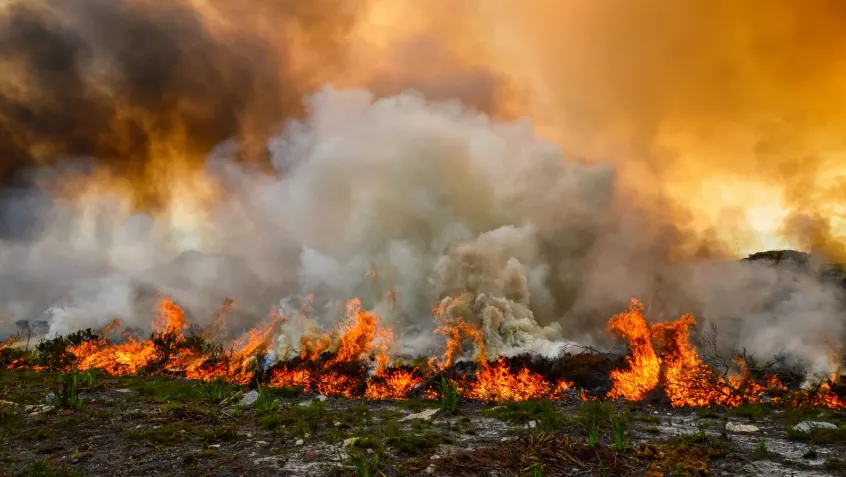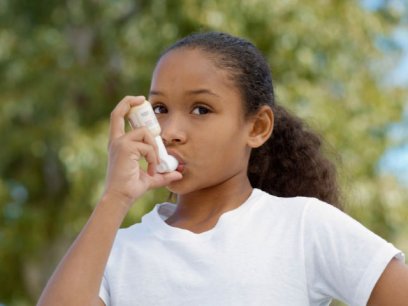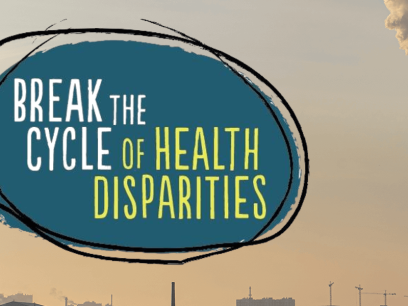
The Growing Wildfire Challenge
Good health starts with clean air—especially for people who are affected by asthma. But throughout the United States, wildfire smoke presents a growing health challenge.
- In January 2025, wildfires in Southern California filled Los Angeles with dangerous smoke. Fine particulate matter (PM2.5) concentrations reached critically high levels, surpassing federal limits and posing serious health risks.
- In June of 2023, intense wildfires in Quebec, Canada, shrouded much of the upper Midwest, Ohio Valley, Northeast, and Mid-Atlantic in a thick cloud of smoke, elevating air pollution in these areas to dangerous levels.
- In the summer of 2020, more than 10,000 lightning strikes over the course of just 72 hours caused hundreds of wildfires to erupt across California, burning hundreds of thousands of acres. The smoke from those fires spread across much of the western US, bringing with it eerie, post-apocalyptic orange skies and dangerous air quality.
Given the growing frequency and intensity of wildfires, it is important to understand how wildfire smoke impacts your health—and how you and your family can prepare. We spoke to Dr. Lisa E. de Ybarrando, a pediatrician at UT Health Houston, and a NEEF Asthma Faculty Champion for tips on how to protect children with asthma from wildfire smoke.
What is Smoke?
Smoke is a complex mixture of gases and fine particles that can penetrate deep into your lungs when inhaled and cause a range of health problems, from itchy eyes to heart and lung disease. The smallest size of particulate matter is the biggest concern for public health because it can reach the bloodstream and affect the lungs, heart, and blood vessels.
Wildfire smoke is fueled by wood, grass, plastics, and other building materials that a fire burns through, which can result in a poisonous combination of chemicals including carbon monoxide, carbon dioxide, hydrocarbons, black carbon (soot), and other respiratory irritants and carcinogens.
Weather conditions such as wind, temperature, and humidity impact how far smoke travels and how much accumulates. Smoke can travel wide distances. The hotter the fire, the higher up the smoke can travel and the further it can spread. For example, smoke from the wildfires of 2020 even reached northern Europe.
The Health Impact of Wildfire Season
If you are healthy, you are usually not at a major risk from short-term exposure to wildfire smoke. However, it’s still a good idea to avoid breathing it in if you can help it.
The US Environmental Protection Agency (EPA) recommends that people with heart or lung disease, diabetes, pregnant women, children, and the elderly should monitor smoke conditions especially carefully because they are at greater risk of experiencing negative health effects.
In the short-term, breathing in smoke can trigger a range of symptoms, including:
- Coughing
- Wheezing
- Irritated sinuses
- Headaches
- Chest pain
So far, there is only limited research available about the potential health impacts of cumulative exposure to multiple days—or entire wildfire seasons—of smoky conditions.
Scientists are still learning about the health impacts of prolonged exposure to wildfire smoke. Researchers found increased numbers of asthma attacks, heart attacks, and strokes during recent wildfire seasons. The toxins associated with wildfire smoke can cause inflammation, blood clots, and muscle spasms that make it hard to breathe.
Prepare for Wildfire Season
May is National Asthma and Allergy Awareness Month, and May 5-9 is Air Quality Awareness Week. This month is also typically the start of fire season in California and across the West. In recent years, fire season has started earlier and ended later due to California’s shifting seasons. In fact, researchers found the state’s rainy season has now been pushed back a full month from November to December.
If you live near a wildfire-prone region, now is the time to prepare for air quality challenges from these natural disasters. Even if a fire is miles away, it can potentially lead to unhealthy air near you.
You can use these online tools to monitor wildfire and smoke conditions:
- AirNow.gov provides real-time local air quality updates and email alerts for your ZIP code.
- The Interagency Real Time Smoke Monitoring Data website includes a map using data from the US Forest Service, Bureau of Land Management, and US Fish & Wildlife Service.
- The AirNow Fire and Smoke Map provides information on ground-level air quality and smoke alerts provided by the US Forest Service-led Interagency Wildland Fire Air Quality Response Program (IWFAQRP) and the EPA.
- The ESRI USA Wildfire Map shows active wildfires using data provided by responding agencies.
What to Do During Smoky Conditions
If your community is affected by wildfire smoke, the EPA recommends taking these steps:
- First, ensure that the wildfire does not pose an immediate threat and you do not need to evacuate.
- Reduce your exposure to smoke by avoiding physical activity outside.
- Keep windows and doors closed to prevent smoky air from getting inside your home and reducing indoor air quality.
- Avoid using anything that burns, such as cigarettes, candles, vacuums, or wood fireplaces.
- If you have an air conditioner, set the air intake to “recirculate” and keep the filter clean.
- Consider purchasing a portable air cleaner or high efficiency HVAC system filter to improve indoor air quality. Choose one that fits your room size and ensure that it does not produce ozone.
- If you need to go outdoors, wear a well-fitting mask with a particulate respirator such as a N95 or P100 model. Dust masks do not offer protection from smoke.
- Keep your inhaler and other quick-relief asthma medicine with you.
Asthma E-Learning Course
Wildfire season shows the direct health impact that the environment has on our lives. NEEF provides resources for healthcare professionals and those affected by asthma to help manage environmental triggers like smoke.
As part of our Pediatric Asthma Initiative, we recently partnered with the Centers for Disease Control and Prevention (CDC) to launch the "Environmental Management of Pediatric Asthma: Guidelines for Healthcare Providers" free online course. This 90-minute eLearning program aims to develop the skills healthcare providers need to identify environmental triggers, counsel patients and families, and implement evidence-based environmental interventions to improve health outcomes for children with asthma.
Learn more about this online program, or register here using our online platform.


